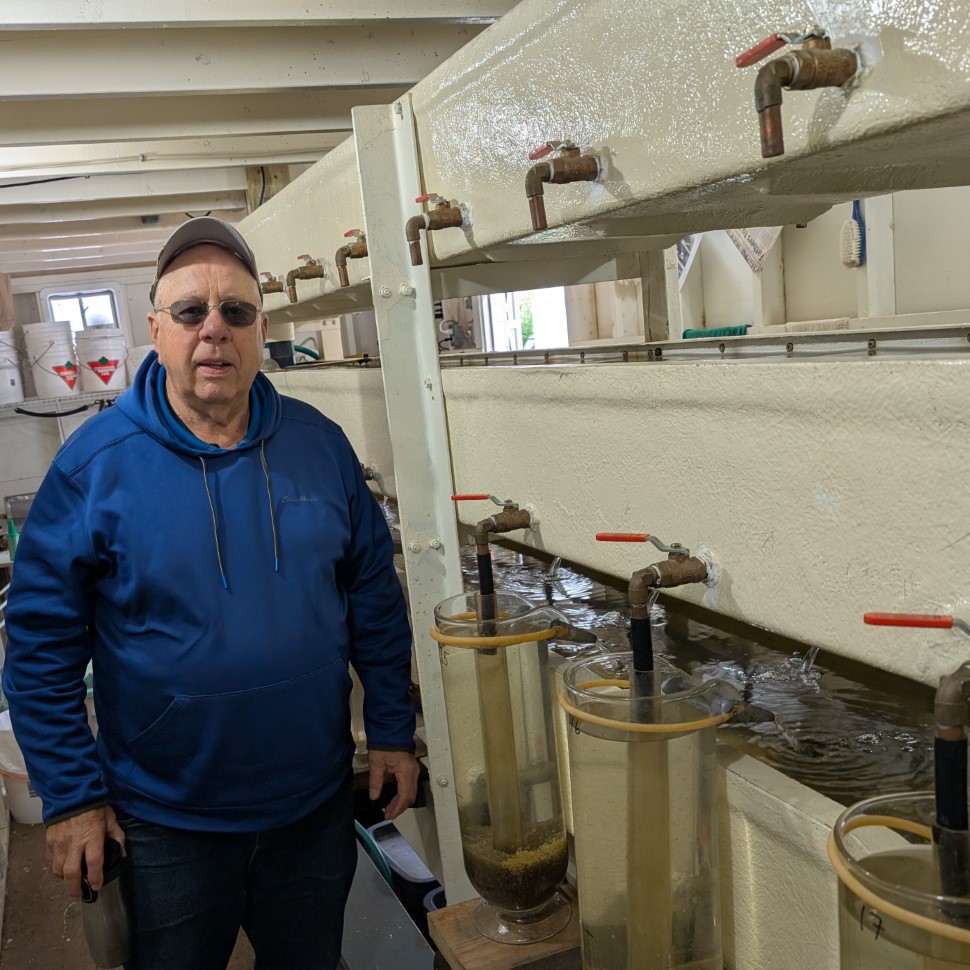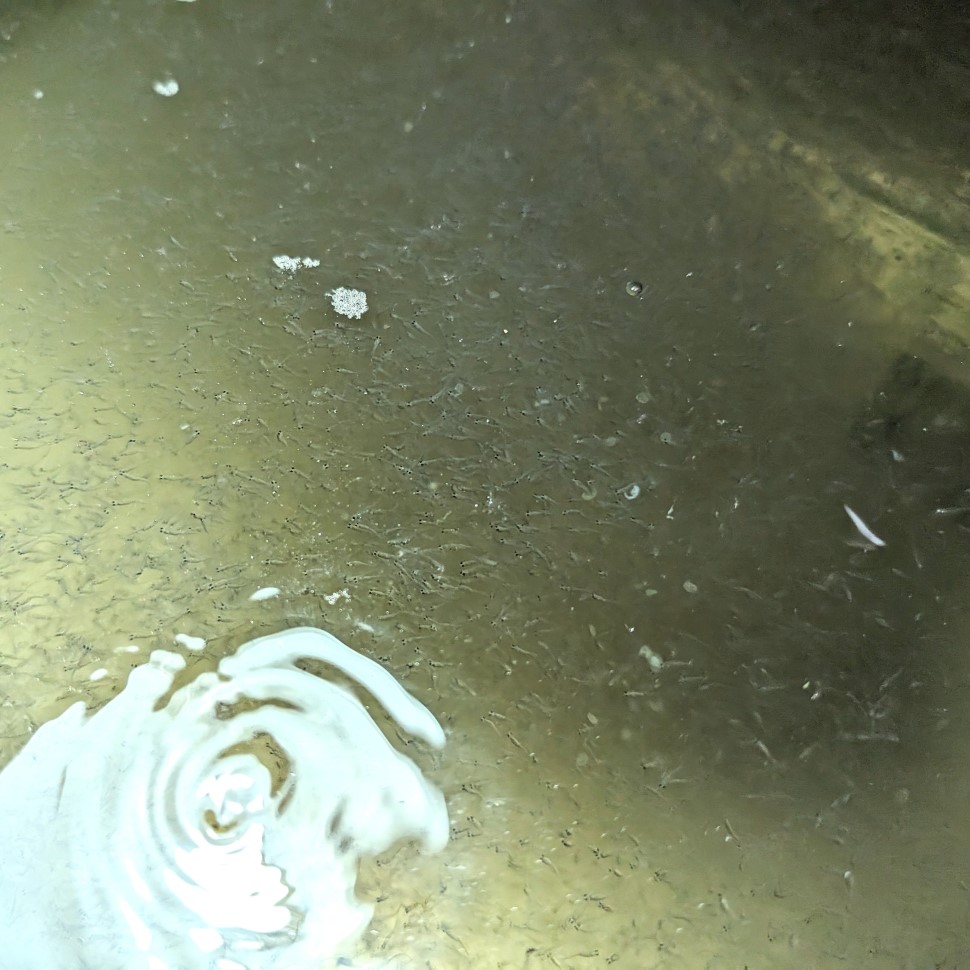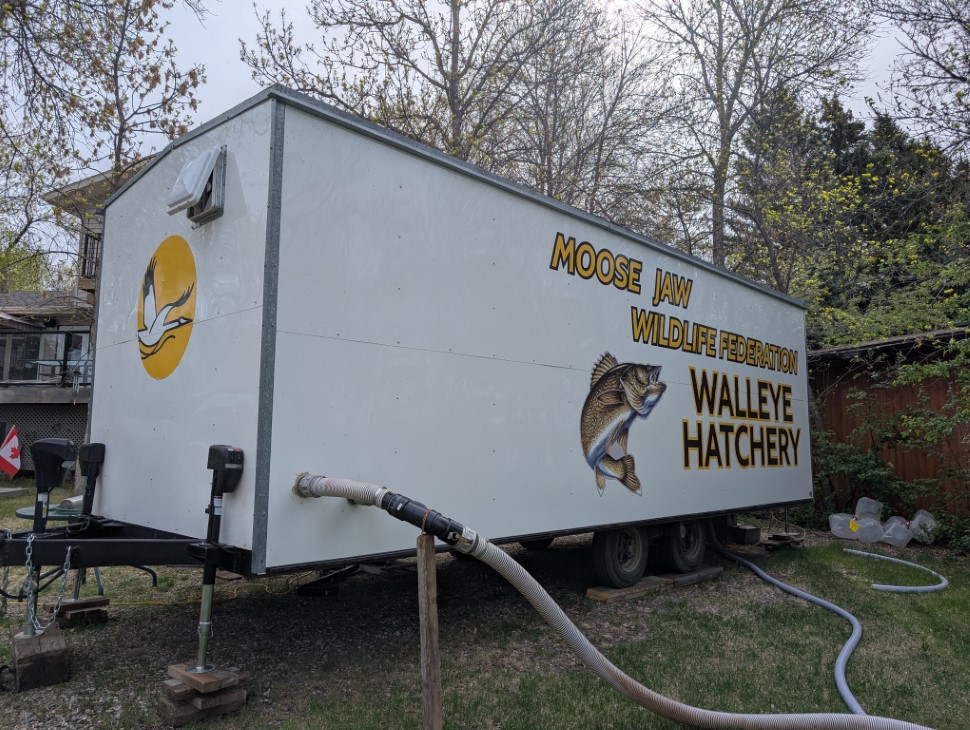In the 26 years since volunteers with the Moose Jaw Wildlife Federation (MJWF) began hatching Walleye fry, they have released at least 35 million baby fish (‘fry’) into 27 different lakes in the southwest corner of Saskatchewan — and made a huge difference for the fish population, and therefore for anglers.
“This is one of only two hatcheries in the entire province,” explained Bill Deyo, a retired veterinarian who’s been helping look after the MJWF Walleye Hatchery from the beginning. “Buffalo Pound Lake is now the seed-stock for all walleye restocking in Saskatchewan.”
The project started in 1999 when members of the MJWF (which is distinct, by the way, from the South Saskatchewan Wildlife Association, SSWA) noticed that the walleye stock in Buffalo Pound was so low, it was in danger of disappearing entirely.
They sourced an old plywood trailer and asked the Saskatchewan Fish Hatchery at Fort Qu’Appelle, which also stocks trout, pike, and other species, for some walleye eggs. Those initial 1.96 million eggs came from Diefenbaker Lake, and the team managed to hatch 66 per cent of them — approx. 1.3 million — which were released directly into Buffalo Pound Lake.
“It’s been a game-changer,” Deyo said. “It’s a huge success story.”
The Hatchery has been generously funded and supported over the years by many generous local businesses, enthusiastic outdoorspersons, and dedicated volunteers.
The MJWF Walleye Hatchery released 1.2 million fry into Buffalo Pound in 2000, 1.3 million in 2001, and in 2002, despite a 50 per cent hatch rate, they expanded for the first time to other lakes, including restocking the Diefenbaker source, Arm River, and Lovering Lakes.
“The problem is, is you get winter kill in some locations, where it’s shallow,” Deyo explained. “The fish would do well for 3 or 4 or 5 years, then you get a heavy snow and there’s no flow going in to replace the oxygen that the fish use up, and so the fish die off before spring can arrive.”
In 2013, they released fry into 10 lakes, and in 2014 they began sourcing eggs from Buffalo Pound Lake, which had by then become better-stocked than Diefenbaker. With help from donors, they also significantly upgraded their trailer, purchasing a large hatchery set-up from the Ministry of Environment.

The process of turning walleye eggs into fry for release
Now, each year, a team of fish biologists from the Saskatchewan Fish Hatchery come and camp on the causeway at Buffalo Pound, where they catch walleye as the fish instinctively travel upstream to breed, mostly at night.
It’s a simple matter of squeezing the eggs from the females and the sperm from the males into a bucket and mixing them together. The fish go back into the lake. The hatchery process is much more successful than the chances the eggs get in the wild.
The eggs are incubated for 2-6 weeks, then given to the MJWF. At the Hatchery, the eggs are placed into large beakers in batches of approximately 50,000. They measure by weight, with about 2,800 eggs per ounce. The Walleye Hatchery is on the property of Deyo’s fellow volunteers Terry and Sue Hunchuk, directly adjacent to Buffalo Pound Lake, and there’s a continuous flow of pumped lake water into the beakers to keep the eggs moving.
“Where the fish spawn in the wild is usually on kind of a rocky shoreline,” Deyo said. “And just the wave action keeps freshly oxygenated water moving over them. So, in the hatchery, if you get a clump that aren’t moving, then they start to grow a fungus and that’s bad news, they won’t hatch. So they have to keep moving, not like a hard boil or anything, but just turning over all the time.
“They hatch and swim to the top of the beaker and go over the spout into this tank, which has a current running to our holding tank, where we trap the walleye fry with a screen system. And from there, we transport them to the various lakes for release.”
Once all the eggs that will hatch have had done so, the tiny fish, about a centimetre long at this point, are put into 5-gallon cubes. The cubes are filled about two-thirds full with water and topped off with pressurized oxygen to maximize survivability during the sometimes hours-long drive to the destination.
Their long-term success averages around 62 per cent. Some years, it’s 80+ per cent — others, it’s as low as the 40s. Everything factors in, from water temperature variability to the consistency of nutrition throughout the year, the presence and hunger of predators, the harshness or mildness of the winters and, of course, how successful the spawn camping team were.
A single large walleye female can have up to 150,000 eggs.
“The survival rate is not that good (in the wild),” Deyo chuckled. “They lay a whole bunch, and what happens, happens. There’s a lot of predators out there in that lake, different fish species and so on.”
Questions about the Walleye Hatchery can be directed to 306-693-4047, or mjwildlife.federation@gmail.com.

